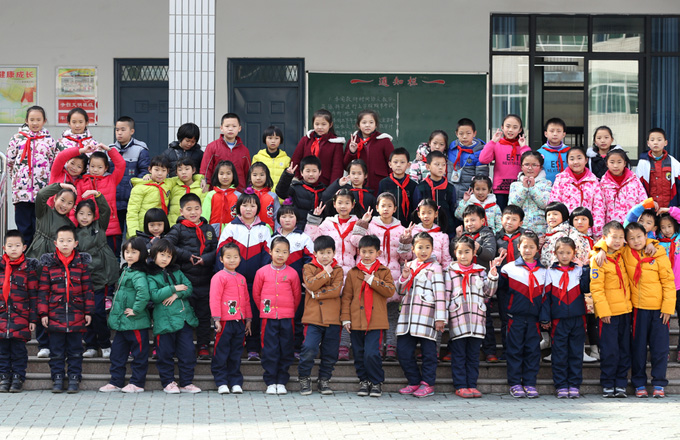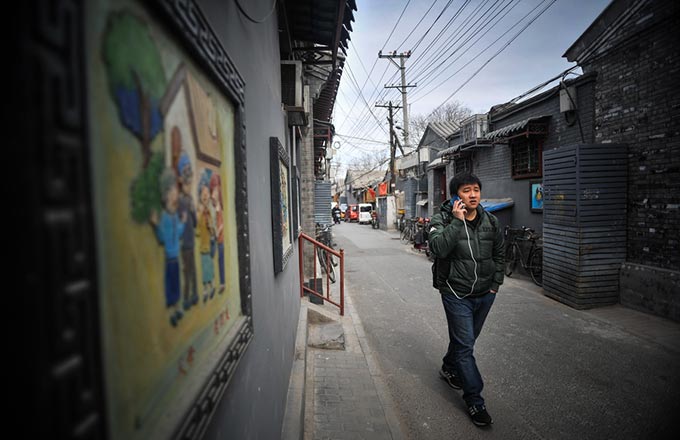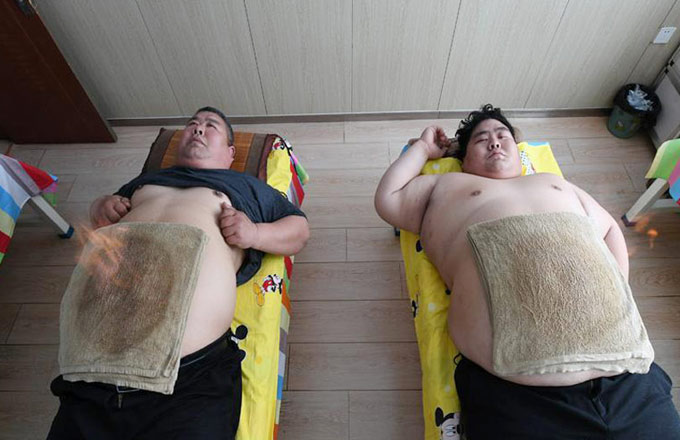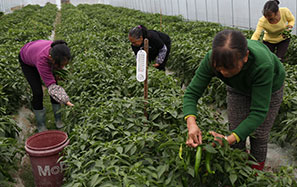China issues white paper on judicial reform of Chinese courts
IX. Improving the Regularization, Specialization and Professionalization of Judicial personnel
According to the overall arrangement by the State and in conjunction with the related departments of the Central Government, the Supreme People's Court has reformed the judge selection and appointment system, improved the system of classified management of judicial personnel, and promoted the establishment of the system of setting a separate rank of posts for judges and determining their remunerations accordingly, so as to enhance the judges' sense of honor and calling towards their profession.
Carrying out the reform of the judge quota system in an all-round way. The higher people's courts in all provincial-level regions have scientifically set the judge quotas for the courts at three levels according to the number of cases handled, and the situations of economic and social development, population and other basic data of the places where the courts are located, and taking into consideration the level of trial and functions of the courts, workloads of judges, staffing of auxiliary judicial personnel and other factors, and dynamically adjusted the court quotas according to changes in the number of cases and personnel structure. Mainly on the basis of number of cases, the courts in Guangdong decided that the proportion of judges should be lower than 30% in Shantou where there are few cases but abundant personnel and be higher than 50% in Shenzhen, Dongguan, Zhongshan and other cities where there are abundant cases but few personnel. As of the end of 2016, 27 provinces, autonomous regions and municipalities directly under the Central Government had finished the appointment of judges under the quota system, with 104,4442 judges in total appointed by 27 higher courts, 340 intermediate courts and 2,623 grass-roots courts. After the reform, the pilot courts no longer set up posts for judges in their judicial administration departments and assign more than 85% of their staff members to trial work. For example, the number of judges in the case handling departments of the courts in Shanghai has increased by 8%, and the proportion of judges to auxiliary judicial personnel has been changed from 1:0.75 before the reform to 1:1.7 after the reform. In Beijing, the number of first-line judicial personnel has increased by 21.4% from 6,128 to 7,550, and the number of auxiliary personnel has increased by 68.8% from 2,689 to 4,538.
Reforming the judge selection and appointment system. The pilot regions have established judge selection committees at the provincial level comprising judge representatives and relevant civilians, and formulated open, fair and just judge selection and appointment procedures, to ensure that only the outstanding legal practitioners who are upright in character and have rich experience and a high professional level will become judge candidates. In order to improve the system of selection of judges level by level, on May 13, 2016, the Organization Department of the CCCPC, the Supreme People's Court and the Supreme People's Procuratorate jointly promulgated the opinions on establishing the system of selection of judges and public prosecutors level by level, which express provide that the judges of the people's courts at the prefecture level or above shall be selected level by level generally, and a people's court at a higher level may appoint judges on a selective basis from the people's courts at the first or second level below it. In October 2015, the Supreme People's Court took the lead in publicly selecting judges from the people's courts at lower levels and finally selected 7 outstanding judges from 62 applicants from local courts nationwide. A system of recruiting judges from qualified lawyers and jurists has been established. In March 2014, the Supreme People's Court conducted a program of publically selecting high-level judicial talents from experts, scholars, lawyers and other personnel practicing law, and finally selected five persons, including experts, scholars, senior lawyers and outstanding public prosecutors, from 195 applicants, including 76 experts and scholars, 75 lawyers and 44 staff members of Party and government departments. In 2015, the courts in Shanghai publically selected one judge from outside the judicature, and the courts in Qinghai publically selected three judges from outside the judicature.
Promoting classified management of judicial personnel. In order to further optimize the allocation of human resources of the courts, China's courts classify the judicial personnel into judges, auxiliary judicial personnel and judicial administrative personnel, and adopt different management systems for different categories of personnel, to ensure that each person is assigned to a definite post of duty and attends to his own duties, and have improved the management systems for judge assistants, clerks, enforcement personnel, judicial policemen and other auxiliary judicial personnel, and scientifically determined the proportion of judges to auxiliary judicial personnel, to effectively reduce the amount of routine and procedural work undertaken by judges. In conjunction with the related departments of the Central Government, the Supreme People's Court has formulated the pilot program to reform the rank of posts of judge assistants and clerks and improved the methods of recruitment and employment of judge assistants. The courts in all regions have expanded the sources of auxiliary judicial personnel and explored outsourcing of social services to optimize the structure of auxiliary judicial personnel. The Jiangsu Higher People's Court has vigorously pushed forward the reform of the clerk system, formulated the standards of the rank of posts of clerks and measures for the training and appraisal of clerks, properly fixed the posts, number and responsibilities of clerks, and provided that the proportion of first-line judges to clerks shall be 1:1, thereby changing the situation that a number of judges shared one clerk in the past and effectively solving the problem of many cases for few persons. In Guangdong, the measures for the management of auxiliary judicial personnel employed under labor contracts were formulated. The Guangzhou Intermediate People's Court established the "three-grade and nine-level" post rank management system, which classifies judge assistants and clerks into senior, middle and junior grades and sets three levels in each grade, and links remunerations to the grades and levels.
Reforming the rank of posts and salary system of judges. In conjunction with the related departments of the Central Government, the Supreme People's Court formulated the pilot programs for the reform on separate rank of posts of judges and for the reform of judges' salary system. According to the "four-grade and twelve-level" judge ranking system set forth in the Judge Law of the People's Republic of China and on the basis of the judge quota system, the pilot programs realized the separation from the judges' professional ranks to their administrative ranks, fully reflect the professional characteristics of judges in the setup of ranks, method of promotion, requirements for seniority in promotion, ratio of promotion, appraisal, punishment, salary system and other respects, provide that the judges may be promoted based on their seniority, on a selective basis or specially, and implement a personnel management system for judges that is different from that for other public servants. Under the pilot programs, a judge of the people's court at any level may be promoted to a certain rank according to his seniority without subject to the limit on the number of posts so long as he seriously performs his duties, even if he does not hold a leading position; the promotion to a relatively high judge rank is subject to ratio or quantity control; a judge may be promoted as an exception or more than one grade at a time if he is very excellent or due to any special need of the work. The pilot programs established a separate salary system for judges according to the professional characteristics of judges, greatly increasing the salary level of judges. The Supreme People's Court has promulgated the guidelines on the performance appraisal and distribution of bonuses in respect of judges and auxiliary judicial personnel and established the performance-based bonus distribution mechanism associated with job responsibilities and actual performance according to the actual circumstances of court work, so as to fully arouse the enthusiasm of first-line case handling personnel.
Establishing the legal research scholar and legal intern systems. In order to enhance the judicial cooperation and exchanges between people's courts and law schools and legal research institutes, and improve the legal practitioner training mechanism, the Supreme People's Court has established the legal research scholar and legal intern systems, and received 179 legal interns in three batches and 10 legal research scholars in two batches. Such legal interns have participated in case recording, preparation of legal documents, investigations of special subjects and other auxiliary judicial work in the capacity of judge assistant (intern) or clerk (intern) under the guidance of judges, so as to explore a new mode of classified management of judicial personnel.
Strictly regulating the after-hours acts of judicial personnel. In conjunction with the related departments of the Central Government, the Supreme People's Court has promulgated the relevant documents, prohibiting judicial personnel from entering into six kinds of contact or intercourse with litigants, lawyers, specially related parties or intermediaries, requiring judicial personnel handling cases to receive litigants, lawyers, specially related parties or intermediaries at working places and during working hours, and prohibiting judicial personnel who have resigned from any judicial organs from acting as process attorneys or defenders in any cases handled by such judicial organs, and judicial personnel who have been dismissed from public office due to violation of the law and discipline from practicing law for life.





















